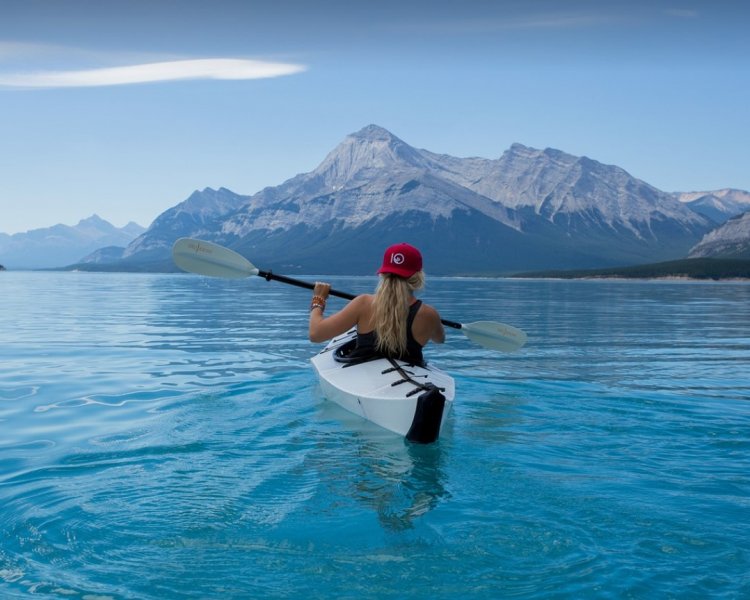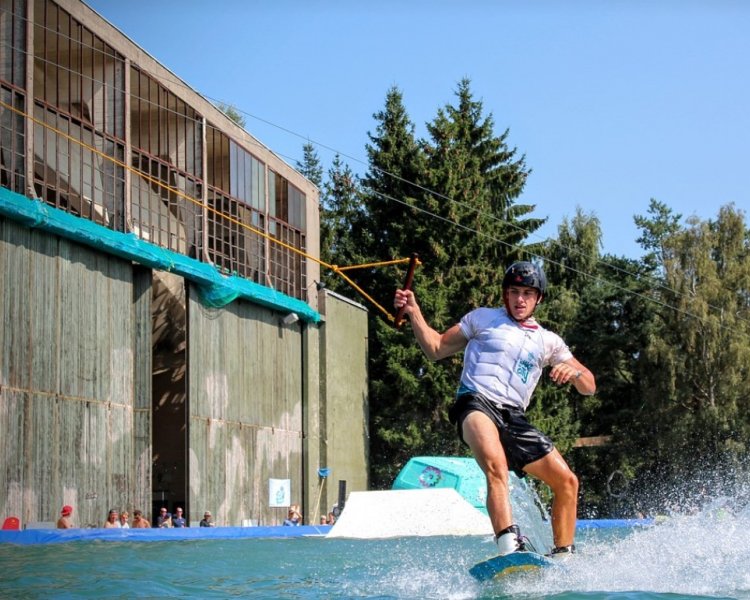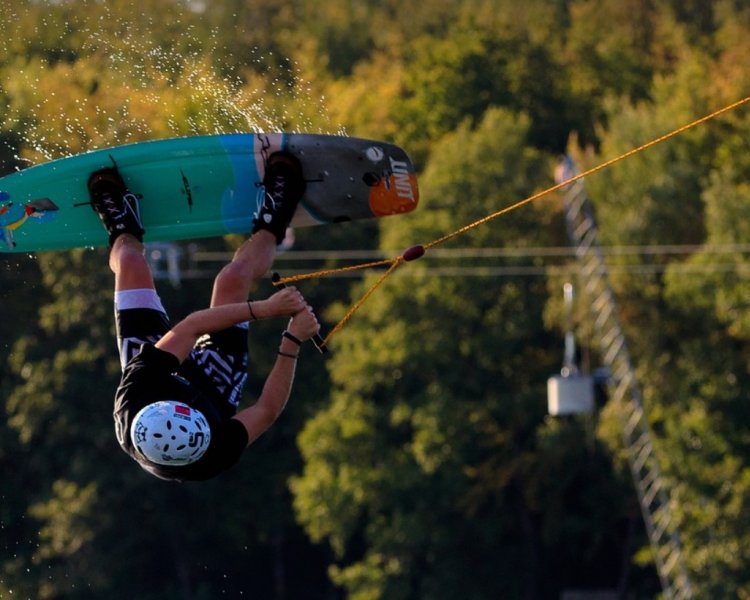When Did Wakeboarding Become Popular? (Is It Popular Tho?)

If you’ve been hiding under a rock and don’t know what wakeboarding is, picture the surfboard being pulled on the back of a motorboat at high speed and the guy holding the ropes while doing spins and flips.
Although it’s the newborn of the water sport community, this youthful sport is high on the rise to dominating the scene altogether!
When did wakeboarding become popular? With its very recent origination in the late 1980’s, this young sport has rapidly gained traction to being listed in the Top 5 Most Popular Watersports. Wakeboarding is undeniably a sport we can’t ignore with over 3 million active participants.
Funny enough, the sport was actually created partially on accident.
The first wakeboarders were actually surfers, with the sport being a combination of surfing and jet-skiing. In the 1980’s, surfers were seeking a solution to which the answer was, you guessed it, wakeboarding.
Read Also: Is Wakeboarding Dangerous?
So, When Did Wakeboarding Become Popular?
Before discussing how the popularity trends have altered for the sport through the recent years, it’s fascinating to learn more about the history of wakeboarding.
In 1985, a Surfer from San Diego named Tony Finn was struggling to create waves or anything to surf on. A stroke of brilliance led to him holding onto a rope that was pulled behind a motorboat and created the waves, water tension, and speed for him to catch a gnarly one!
Using their conventional surfboards in a way that probably looked primitive to the young professional wakeboarders of this decade, Tony Finn and his group rode on their surfboards while being towed.
During this time, they would even tie their surfboard to trucks to practice their new creation and allow it to drag them and their surfboards down the beach.
What they realized in these experiments was that the standard surfboard wouldn’t do the trick. They needed to create an original board for the purposing of being towed.
This led to surfers shaving their surfboards and rubbing them into the first versions of small home-made wakeboards.
The first official board was by Tony Finn who created a ride exclusively for wakeboarding. The first name was in fact – The Skurfer – as it was the combination of Jet-skiing and Surfing.
Read Also: Why Is It Called Wakeboarding?
The name never caught on, for obvious reasons.
The popularity of wakeboarding didn’t come until the 1990’s. During this time, they developed the Hyperlite board which was ergonomic and resisted the water’s tension. This was created by the O’Brien Company who took Finn’s creation to the next level.
The real tipper of this scale is when Jimmy Redmon entered the scene. He was a fan of the wakeboard and wanted to help it gain all the popularity it deserved. Working with Finn, he added the foot latches so you could secure your feet to the board.
Redmon’s adaptation to the original Wakeboard is what took it to the level of popularity we all know it to be at today.
Once they figured out the perfect name and shape for the wakeboard, it was on its way to competing with the sports it initially stole it’s premise from – surfing and jet skiing.
With a snazzier name than Skurfer, the wakeboard was and still is a sport that people of all ages love taking part in.
Whether just floating along as a beautiful and more active way to see the sights, or if you’re a trickster who wants to do backflips and acrobatics – the sport is whatever you make it.
Wakeboarding began to grow in popularity at the turn of the millennium as it got the attention of the eyes that mattered. With larger and more private firms taking notice, this is where the money comes in that makes any sport a hit.
By the year 2000, ESPN had taken note of the sport on a global scale. In this same year, two of the most renowned Wakeboarding competitions, the Vans Triple Crown of Wakeboard and the Wakeboard World Cup, emerged.
Through board adaptations, quick fixes, a rebranding session that included an entirely new name – the wakeboard was ready to take on the masses.
Popularity Trends of Wakeboarding
By the 2000’s, Wakeboarding had developed a culture of its own. This means specialized gear engineered especially for the minimal number of lucrative professionals, television coverage, ESPN’s attention, national competitions, and professional organizations.
Wakeboarding had made it big! And in only 15 years’ time.
Leading into today, nearly 20 years later, and where does Wakeboarding stand? Wakeboarding has had a very steady support system. The figures sourced from the Official Outdoor Foundation are as follows:
Number of Americans that are Wakeboarding - From 2006 to 2017:
- 2006: 3.05 Million
- 2007: 3.52 Million
- 2008: 3.54 Million
- 2009: 3.58 Million
- 2010: 3.65 Million
- 2011: 3.39 Million
- 2012: 3.35 Million
- 2013: 3.32 Million
- 2014: 3.13 Million
- 2015: 3.23 Million
- 2016: 2.91 Million
- 2017: 3.01 Million
From the 3 million Americans a year that are wakeboarding in recent years, nearly a third of them are ages 6 to 18.
The next third ranges in age from 19 to 25. Another reason for its potential growth is the rise of boating purchases.
In 2017, there were nearly 12 million registered boats in the United States. If they’re already lovers of the water and enjoy tubing, fishing, or diving, and it’s only a matter of time before some of them try something new.
To compare this to surfing, nearly 20-30 million people on average are surfing right now. This means that wakeboarding is nearly 10xs smaller of a sport that surfing, but it’s also much newer.
Watersports such as snorkeling, diving, kayaking, canoeing, and rafting attract millions of Americans a year. Since they already love water sports, this is a great sign for the popularity of wakeboarding.
As compared towWakeboarding, a calmer and globally useful watersport like boating attracts nearly 50 million people each year in the United States.
On these scales, wakeboarding may look small, but 3 million is anything but small. Jamaica, Uruguay, and Puerto Rico are all countries with around 3 million is their population. Now that’s a lot of people wakeboarding!
Important Dates in Wakeboarding’s Growth
Some important dates that prove how the sport has gone from small scale in Florida all the way to Global recognition – can be seen in this outline.
The World Wakeboard Council. Important Milestone Dates:
- 1999 Meeting in Fort Lauderdale, IWSF to establish the World Wakeboard Council.
- 1999 Jean Claude Durousseau official as World Council Chairman by IWSF
- 2000 1st IWSF Wakeboard World Championships, Montpellier, France.
- 2001 Wakeboard enters World Games for 1st time in Akita, Japan.
- 2002 Wakeboard Worlds travels to South America for 1st time.
- 2004 The Wakeboard World Cup Commences with $50,000 purse per tour stop
- 2006 Neil Harris elected as World Chairman
- IWSF recognizes Wakeboard as part of the name and changes to IWWF
- 2010 Wakeboard enters the Mediterranean Games in Pescara, Italy for the 1st time.
- 2011 World record number of countries 36 in total enter the Wakeboard World Championships in Milan, Italy
Despite its youth, Wakeboarding has made a name for itself and is only on the upward trend. It’s difficult to ignore how steady the sport has remained over the last almost forty years since its creation.
Even if numbers have slightly dropped in the last 10 years, they’re only .04 million away from where they were in 2006. As a new sport, it has plenty of time to build its reputation and change the game of water sports forever.
Final Thoughts
If you’re still unsure about the popularity of wakeboarding, you can see on common Facebook polls (which is getting it directly from the people) that wakeboarding is rated in the Top 5 of All-time Favorite Watersports.
Don’t let Wakeboarding brief history fool you. This sport is not going anywhere anytime soon.
...



